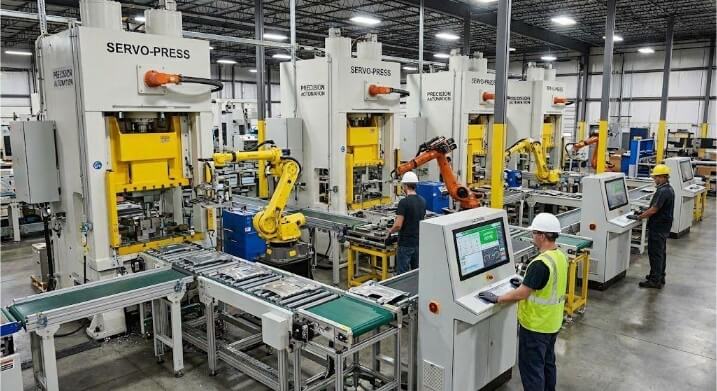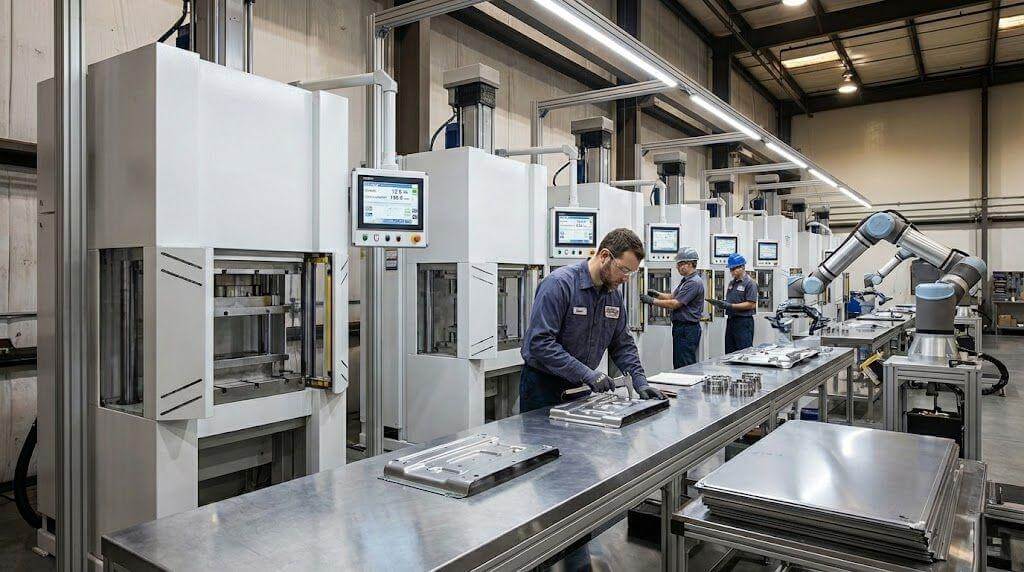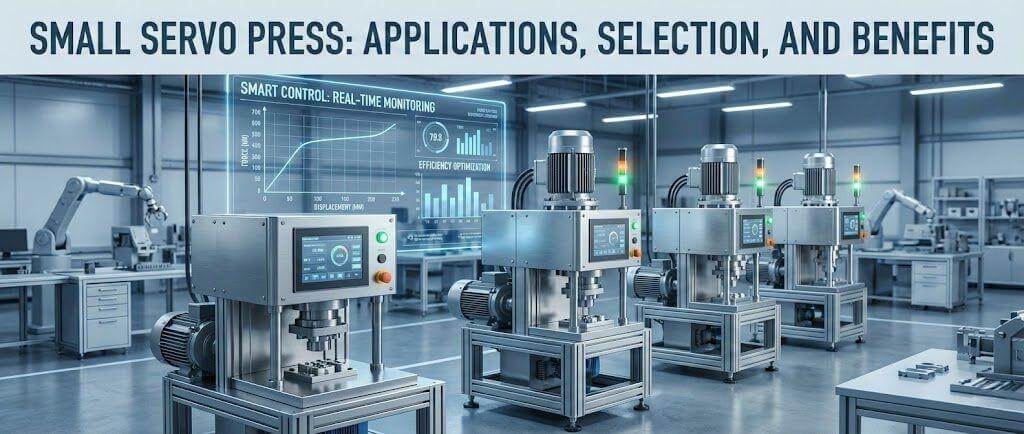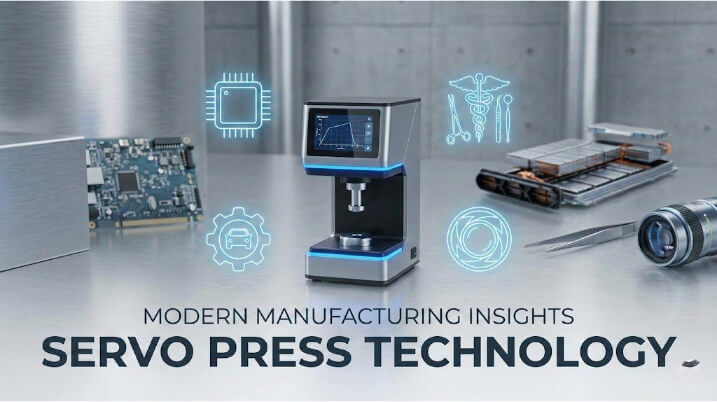Many manufacturers face a common challenge: joining metal parts quickly and reliably. Traditional welding methods often need to catch up, causing production delays and quality issues. Projection welding offers a fast, precise solution that’s perfect for high-volume manufacturing.
Projection welding is a form of resistance welding that uses pressure and electric current to join two or more metal parts. It uses raised sections or “projections” on one of the metal parts to concentrate the welding current, heat, and pressure. This technique creates consistent, high-quality joints in a fraction of the time compared to other methods.
Want to know how this technique can revolutionize your production process? Let’s explore the nuts and bolts of projection welding.
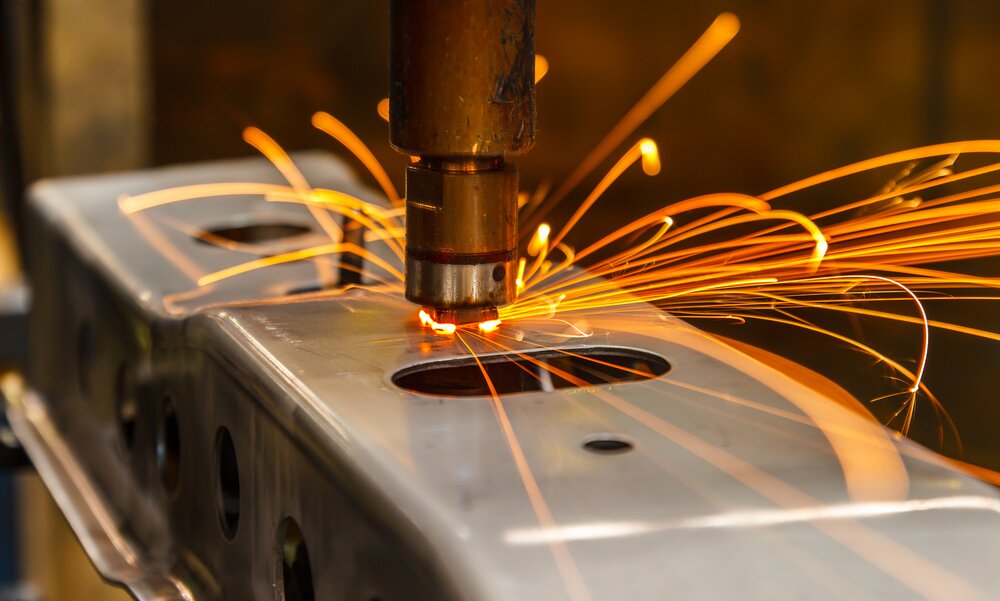
How Projection Welding Works
Heat and pressure work together in projection welding to create strong bonds. An electric current passes through the metal parts while pressure is applied. The raised projections focus on the current flow, causing rapid heating at specific points.
The Principle of Projection Welding
Projections act like tiny lightning rods. They focus on electrical resistance and generate heat exactly where it’s needed. As the projections heat up and soften, the pressure pushes the parts together, forming a solid weld nugget at each projection point.
Key Components Involved
Every projection welding setup needs three main elements:
- A power supply that delivers precise current control
- Electrodes that apply pressure and conduct electricity
- A control system to manage timing and force
Electrode Design
Electrodes make or break the welding process. They must:
- Conduct electricity efficiently
- Apply even pressure
- Resist wear and deformation
- Match the workpiece geometry
Water-cooled copper alloy electrodes often work best. Their design varies based on the parts being welded and production speed requirements.
Workpiece Preparation
Proper part prep leads to better welds. This includes:
- Clean, oxide-free surfaces
- Correctly sized and shaped projections
- Consistent material thickness
- Proper fit-up between parts
Types of Projection Welding
Manufacturers have two main options for projection welding. Each type fits different production needs and part designs.
Spot Projection Welding
Spot projection welding creates individual weld points. It works best for:
- Parts that need multiple, separate connection points
- Applications where weld spacing matters
- Projects requiring precise heat control
This method shines in automotive assembly. It helps join body panels, brackets, and other components quickly and reliably.
Continuous Projection Welding
Continuous projection welding makes unbroken weld lines. This technique:
- Joins parts along their entire length
- Creates hermetic seals when needed
- Handles larger workpieces efficiently
Many appliance makers use this method. It’s perfect for sealing containers or joining long metal strips.
Advantages of Each Type
Spot projection welding offers:
- Lower heat input into parts
- Faster cycle times
- Less electrode wear
- More precise control
Continuous projection welding provides:
- Better sealing capabilities
- Higher overall joint strength
- Fewer potential leak points
- Smoother appearance
Applications of Projection Welding
Different industries leverage projection welding to solve unique manufacturing challenges. Its precision and reliability make it a go-to choice for critical applications.
Automotive Industry
Car makers rely heavily on projection welding. It’s used for:
- Fastening nuts to body panels
- Joining seat frames
- Attaching brackets and supports
- Building electrical components
One car can contain thousands of projection welds. This method helps automakers boost production speed while maintaining quality.
Aerospace Applications
In aerospace, every weld must meet strict standards. Projection welding delivers by:
- Creating consistent, repeatable joints
- Minimizing heat damage to sensitive parts
- Reducing weight compared to mechanical fasteners
- Ensuring high-strength connections
Aircraft engines, landing gear, and control systems all benefit from this technique.
Electronics Manufacturing
Electronics need reliable electrical connections. Projection welding helps by:
- Joining battery terminals
- Creating circuit breaker components
- Fastening electrical contacts
- Building transformer cores
The precision of projection welding prevents damage to delicate electronic parts.
Medical Devices and Equipment
Medical manufacturers choose projection welding because of it:
- Creates clean, contamination-free joints
- Allows for sterilization of finished products
- Produces smooth surfaces without sharp edges
- Makes tiny, precise connections
From surgical instruments to implantable devices, this method meets strict medical standards.
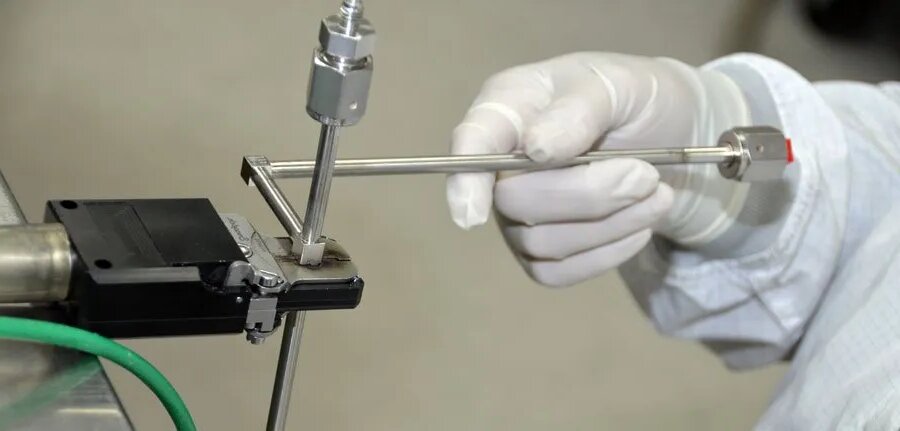
Benefits of Projection Welding
Smart manufacturers always look for better production methods. Projection welding brings several advantages that can boost your bottom line.
High Production Efficiency
Projection welding speeds up production dramatically:
- Welds form in milliseconds
- Multiple welds happen simultaneously
- Setup time between parts is minimal
- Automation fits easily into the process
One machine can produce thousands of parts per shift. This high output helps meet tight deadlines and increasing demand.
Cost-Effectiveness
The numbers make sense with projection welding:
- Less energy used per weld
- Minimal consumable materials needed
- Lower labor costs due to automation
- Reduced scrap rates
These savings add up fast. Many companies see ROI within months of switching to this method.
Reduced Distortion and Stress
Quality improves with projection welding:
- Heat affects only small, specific areas
- Parts maintain their shape better
- Less warping occurs during the process
- Finished products need less rework
This precision leads to stronger products that fit together right the first time. It cuts down on waste and warranty claims.
Challenges in Projection Welding
Every welding method has its hurdles. Knowing these challenges helps you plan better and avoid costly mistakes.
Common Defects
Quality issues can pop up in projection welding. Early detection makes all the difference:
- Weak spots in the weld
- Inconsistent weld size
- Surface marks or indentations
- Cracking in or around welds
Regular quality checks catch these problems fast. Quick fixes keep production moving smoothly.
Insufficient Penetration
Poor penetration weakens welds. It happens due to:
- Low welding current
- Short weld time
- Wrong projection design
- Misaligned parts
Testing sample parts helps dial in the right settings. A good setup prevents weak welds.
Overheating
Too much heat causes trouble:
- Metal splatter
- Electrode sticking
- Part discoloration
- Excessive indentation
Proper cooling and timing adjustments solve most heat issues. Modern controls make this easier than ever.
Mitigation Strategies
Smart planning beats problems before they start:
- Use simulation software to predict issues
- Train operators thoroughly
- Maintain equipment regularly
- Monitor weld parameters constantly
Data collection helps spot trends. This lets you fix small issues before they become big headaches.
Comparison with Other Welding Techniques
Choosing the right welding method has a big impact. Let’s compare projection welding to other popular options.
Projection Welding vs. Spot Welding
These cousins have key differences:
Projection Welding:
- Creates multiple welds at once
- Works better with thicker materials
- Needs specially prepared parts
- Offers more precise heat control
- Simpler part preparation
- Lower equipment costs
- More flexible for different part shapes
- Easier to learn and use
Projection Welding vs. Resistance Welding
Though similar, these methods serve different needs:
Projection Welding:
- Focuses heat at exact points
- Reduces overall heat input
- Makes cleaner-looking joints
- Handles complex part geometries
Resistance Welding:
- Requires less specialized tooling
- Works with more material combinations
- Adapts easily to different part sizes
- Needs less precise part fit-up
Advantages and Disadvantages
Projection welding shines in some areas but needs to improve in others.
Advantages:
- Higher production speeds
- More consistent weld quality
- Less electrode wear
- Better for automated processes
Disadvantages:
- Higher initial equipment cost
- Requires precise part preparation
- Limited to compatible metals
- More complex setup and maintenance
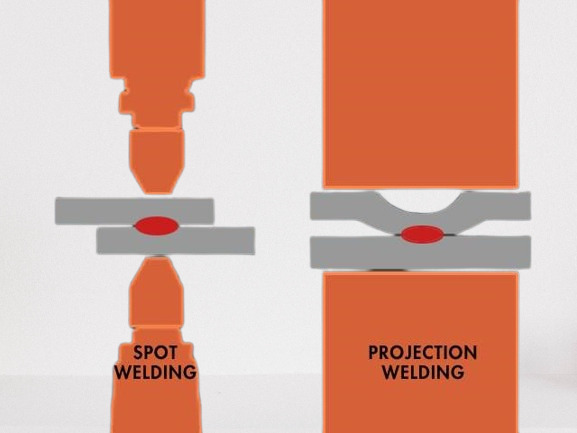
Selecting the Right Equipment for Projection Welding
Picking the right welding equipment sets you up for success. If you do this step correctly, you’ll save time and money down the road.
Key Equipment Specifications
Focus on these critical factors:
Power Output:
- Match to your material thickness
- Consider future production needs
- Look for adjustable settings
- Check both voltage and amperage ranges
Control Systems:
- Digital controls offer better precision
- Data logging helps track quality
- Programmable settings speed up changes
- Remote monitoring boosts efficiency
Electrode Options:
- Cooling capacity affects production speed
- Material choice impacts electrode life
- Force range must match your parts
- Quick-change designs reduce downtime
Safety Features:
- Emergency stops
- Overload protection
- Proper guarding
- Operator safety interlocks
Recommended Brands and Models
Top equipment choices vary by need:
Small-Scale Production:
- Mid-range power supplies (15-50 kVA)
- Manual or semi-automatic controls
- Basic data tracking
- Standard electrode options
High-Volume Manufacturing:
- High-power systems (75+ kVA)
- Fully automated controls
- Advanced monitoring systems
- Specialized electrode designs
Budget-Friendly Options:
- Used equipment from reputable dealers
- Basic models from major brands
- Lease options for expensive systems
- Upgradeable base models
Conclusion
Projection welding stands out as a powerful solution for modern manufacturing needs. Its speed, precision, and reliability make it ideal for high-volume production. As automation becomes more critical, this technique will only grow in importance. The initial investment pays off through faster production times and higher quality outputs. For many manufacturers, mastering projection welding gives them a real edge in today’s competitive market.
Do you need a reliable sheet metal parts manufacturer? Shengen is the place to go. We specialize in sheet metal laser cutting, bending, surface finish, and CNC Machining. Reach out to Shengen Today and seek help from professionals!
FAQs
What is projection welding often used to weld?
Projection welding excels at joining nuts, bolts, and brackets to flat metal surfaces. Car makers use it heavily for body panels and frame assembly. It also works great for electrical components like battery terminals and switch contacts.
What materials can be welded using projection welding?
Most common metals respond well to projection welding. Steel remains the top choice, especially low-carbon and stainless varieties. Brass and copper also work nicely. Some aluminum alloys can be welded this way, too, though they need special settings.
How does projection welding compare in cost to other methods?
The upfront cost is higher than for simpler welding methods, but long-term savings often justify the investment. Faster production speeds, less waste, and lower labor costs add up quickly.
What safety precautions should be taken during projection welding?
Proper safety gear matters most—welding helmets, heat-resistant gloves, and flame-resistant clothing. Good ventilation removes fumes. Regular equipment checks prevent electrical hazards. Thoroughly training operators helps avoid accidents.
Hey, I'm Kevin Lee

For the past 10 years, I’ve been immersed in various forms of sheet metal fabrication, sharing cool insights here from my experiences across diverse workshops.
Get in touch

Kevin Lee
I have over ten years of professional experience in sheet metal fabrication, specializing in laser cutting, bending, welding, and surface treatment techniques. As the Technical Director at Shengen, I am committed to solving complex manufacturing challenges and driving innovation and quality in each project.

